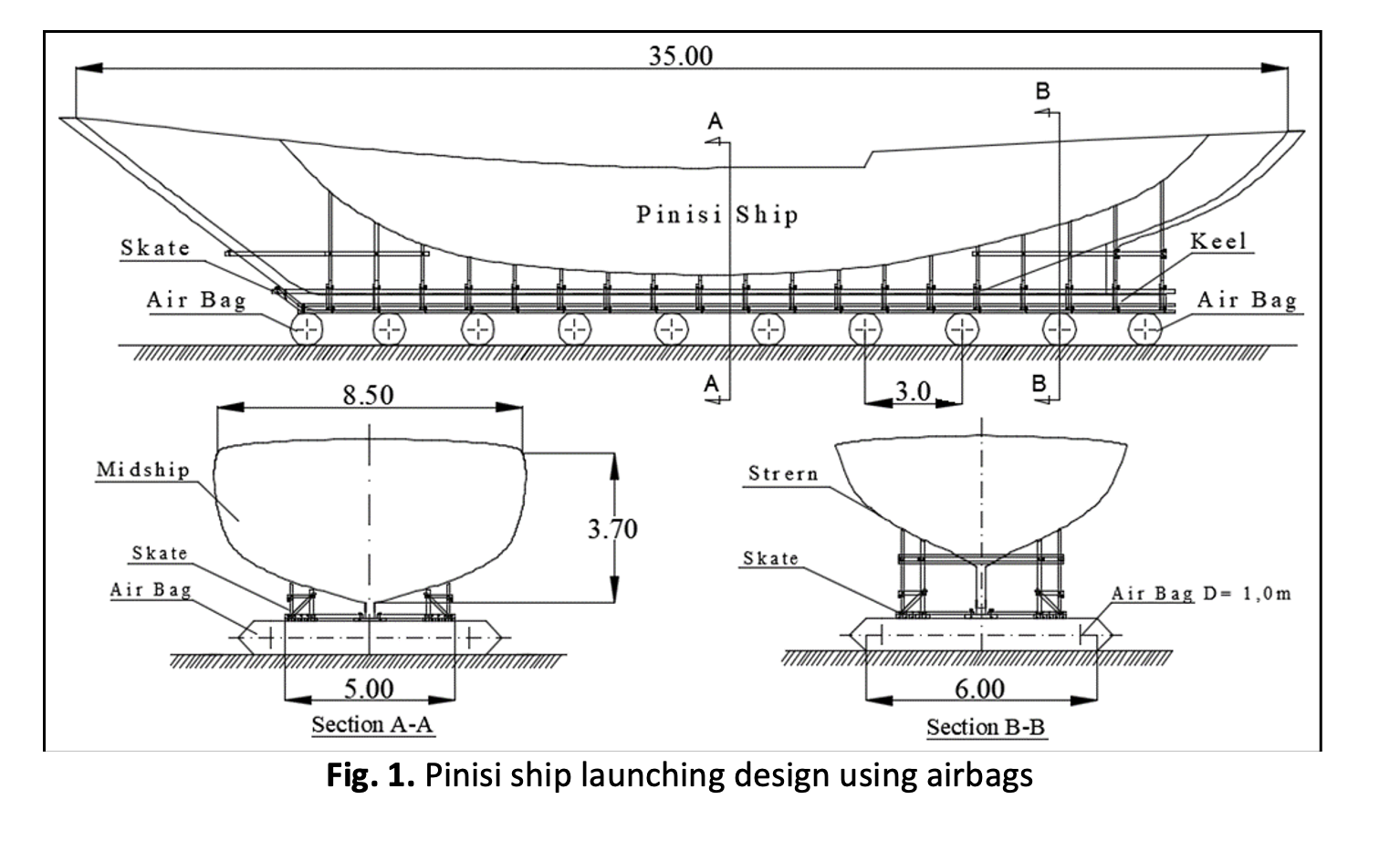Study of the Effect Launching System using Airbags on the Hull Structures of Pinisi Ship
DOI:
https://doi.org/10.37934/araset.49.2.278295Keywords:
Finite element analysis, Ship launching, Airbags, Pinisi shipAbstract
Using airbags for ship launching is a technological innovation with promising implications for the shipbuilding industry. Considering the inefficiency and time consumption of the traditional Pinisi ship launching method, an airbags system is considered an alternative technology. This research involves a simulation of applying airbag technology for ship launch on the Pinisi Ship to assess stress concentration and magnitude. The Pinisi ship, airbags, and skates are designed in three dimensions on a real-size scale for analysis and then analysed using Finite Element Analysis (FEA) in ANSYS software. During the launch, the keel of the ship and airbags were subjected to a compressive force with a 3-millisecond analysis time. The stress and stress concentration levels in the Pinisi ship's structure vary between using airbags and the traditional launch method during launch. The ship's engine room bulkhead and the bow collision bulkhead structure underwent considerable tensile and compressive stresses in longitudinal and transverse orientations. The average maximum compressive stress and maximum tensile stress that occur in the longitudinal direction of the ship are around 50.2 MPa and 87.3 MPa, respectively. Compared to the maximum compressive stress, which accounts for 36% of the overall maximum stress encountered, the highest tensile stress experienced by the ship's structure is 64%.
Downloads


























